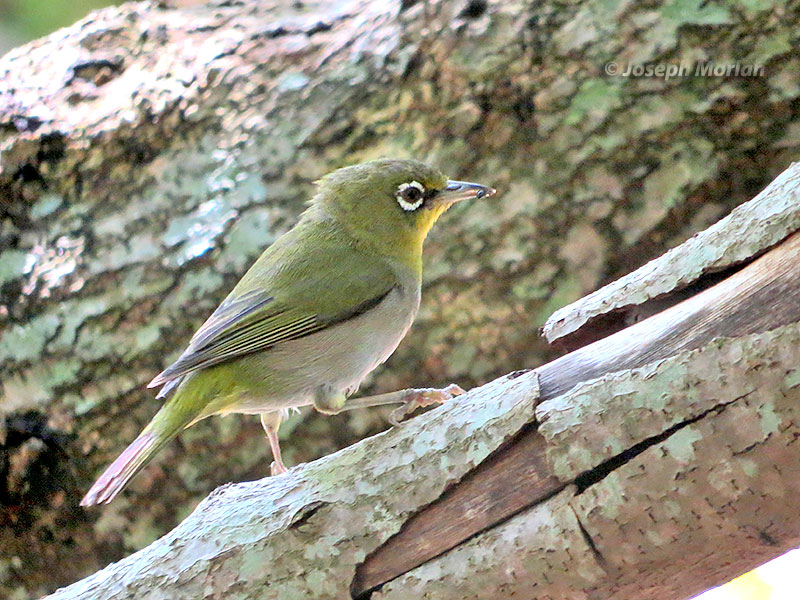
White-eyes have been placed in the Babbler family (Timaliidae) but have recently been restored to their own family, the Zosteropidae. This South African endemic was formerly lumped with Orange River White-eye (Zosterops pallidus) but now split based on molecular research by Oatley et. al. (2012). Thompson & Taylor (2014) have argued that Z. virens has priority over Z. capensis. Their recommendation has been adopted by IOC, HBW and H&M4 (supplement) but not by Clements/eBird. Two subspecies groups are recognized. This is the nominate group found in the Western Cape region and characterized by its gray underparts. The Green White-eye group (race Z. c. virens) is yellow below and ranges to the East. The nominate group may be further divided into three weakly defined races of which this one is Z. c. capensis, characterized by darker gray underparts and reduced yellow on its forehead. Canon PowerShot SX50 HS
References:
del Hoyo, J. & Collar, N. (2018). Cape White-eye (Zosterops virens). In: del Hoyo, J., Elliott, A., Sargatal, J., Christie, D.A. & de Juana, E. (eds.). Handbook of the Birds of the World Alive. Lynx Edicions, Barcelona. (retrieved from https://www.hbw.com/node/1343955 on 18 June 2018).
Thompson, L.J. & Taylor, B. (2014) Is the Cape White-eye Zosterops virens or Zosterops capensis? Ostrich 85(2): 197–199.
Oatley, G., Voelker, G., Crowe, T.M. & Bowie, R.C.K. (2012) A multi-locus phylogeny reveals a complex pattern of diversification related to climate and habitat heterogeneity in southern African white-eyes. Mol. Phylogenet. Evol. 64(3): 633–644.